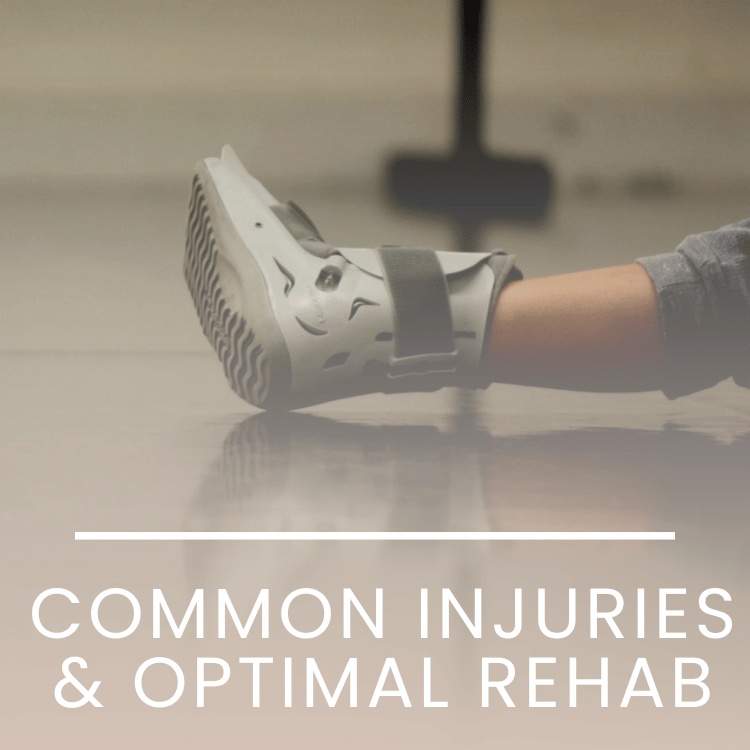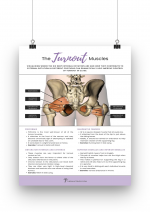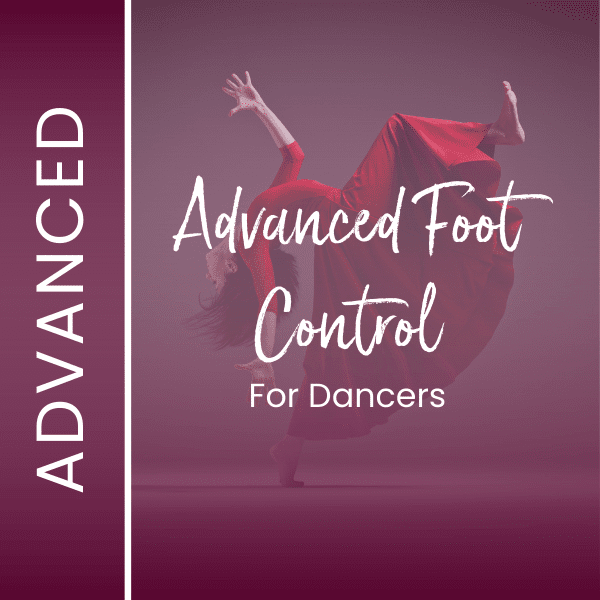- Free Articles
- Shop
- Workshops
- The Dance Educator Series
- Upcoming Workshops
- Workshop FAQ’s
- Host Application Form
- Student Workshop Application Form
- Dance Teacher & Health Professional Directory
- Workshop Testimonials
- Members Areas
- Cart
- My Account
Level 1 – The Fundamentals – Starting 1st May, 2023
$750.00
- Price displayed in AUD
- $750 AUD is approximately equal to $510 USD
- Please check xe.com to convert to your local currency or check daily currency conversion
- Price displayed excludes GST (Applies to Australian residents only)
This workshop has been converted into an online interactive workshop. To help replicate the in-depth learning of the in-person workshops, we have divided this workshop into five sessions, over the course of a five-week period, to allow optimal understanding of all of the content via an online virtual workshop. The course fee includes 6 months free access to the Level 1 Teacher Training Portal, which includes footage of every test and exercise in the workshop.
Dates and Times:
- The timing of this workshop makes it perfect for the following locations: United States, Canada, Australia, New Zealand, Singapore and Japan.
- To check the exact times in your location CLICK HERE
Sydney, Australia (AEST):
- Call #1 – Monday 1st May, 2023 – 8am – 12.30pm
- Call #2 – Monday 8th May, 2023 – 8am – 12.30pm
- Call #3 – Monday 15th May, 2023 – 8am – 12.30pm
- Call #4 – Monday 22nd May, 2023 – 8am – 12.30pm
- Call #5 – Monday 29th May, 2023 – 8am – 12.30pm
New York, USA (EDT):
- Call #1 – Sunday 30th April, 2023 – 6pm – 10.30pm
- Call #2 – Sunday 7th May, 2023 – 6pm – 10.30pm
- Call #3 – Sunday 14th May, 2023 – 6pm – 10.30pm
- Call #4 – Sunday 21st May, 2023 – 6pm – 10.30pm
- Call #5 – Sunday 28th May, 2023 – 6pm – 10.30pm
By ticking this box, I understand that any of the material gained from these workshops can exclusively be used for the educational purposes of my teaching. Redistribution of this material, either electronically or physically, is not allowed as well as dissemination of the information within these courses for personal profit.
14 in stock
What’s Included:
- 20 hours of teaching spread over 5 Live Zoom Workshops. To replicate the depth of learning and personal connection we feel at the in-person course, the content will be delivered in a combination of live teaching, pre-recorded content and personal exploration.
- CEC Accreditation. After this workshop, you will be emailed the CEC Accreditation Application Form, which is designed as an overview of the online course in order for you to appropriately claim CEC credits with your governing body for 20 contact hours of education.
- Access to recordings of the online workshop. After the workshop you will be given three months access to the recordings of the live zoom sessions, giving you the opportunity to go over any particular part of the course in your own time.
- Members Portal Access. 6 months unlimited access to the Level One online teacher training portal which includes over 250+ detailed videos of all content in the course for you to review at your own pace.
- Ongoing Coaching Calls. Lisa runs a live online coaching call every fortnight based on a question from a current member, giving you the opportunity to continue your learning. This is the perfect time to ask specific questions or submit a case study of your own.
- Previous Coaching Calls. Instant access to the library of over 80 previously recorded Coaching Calls which will help you use the content in real life situations. Each one is approximately one hour in length and is accompanied by a detailed PDF guide for easy application in the studio.
- A comprehensive set of additional resources. We have curated an extensive selection of assessment sheets, class plans, anatomical handouts and mini programs to help you easily integrate the content of the course into your teaching.
Level 1 Teacher Training - Online Virtual Workshop
This Online Teacher Training Workshop is designed for both dance teachers and therapists who work with dancers!
This course gives both dance teachers and therapists a deeper understanding of the exact biomechanics of optimal performance, to easily assist dancers to recover from injury, improve their technical capacity and prevent injury at critical stages in their training. You will learn how to fine tune your observation skills for the subtlety required for dance, accurately assess technical faults and specific anatomical restrictions, understand how to correct these issues with specific exercises and mobilisers, learn how to integrate this into dance training and the clinical management of dancers, discover how to manage common dance injuries and much more.
No two dancers bodies are the same, so it is no wonder that when 20 students in the same class are given the same exercises, their bodies will react differently. The secret to all students achieving their full potential is in individual assessment of specific key areas and careful prescription of individualised exercises and mobilisation techniques to correct the core issue, allowing each student to perform at their full potential.
The original three day course has now been reformatted for online delivery, with a combination of live teaching, pre-recorded content and personal exploration. In the Live Online Workshop the content is delivered over five Zoom workshops with the basic outline as follows.
Call #1
(4 hours)
Introduction: We spend the first few minutes inviting attendees to introduce themselves, and to give a brief background of their training and vocational focus.
Navigation of the Portal: Participation in the Live Online Workshop grants all attendees access to the complete Level 1 Teacher Training Portal for a period of time. This allows you to review the content at your own pace, and also allows the ability for us to add richer content over time.
Postural Control: Mastering subconscious, dynamic and subtle control of basic standing posture is essential before moving on with any higher level strengthening. We look at the subconscious drivers to habitual postural positions and the various ways that this can shape the dancer's body.
The Dancers Warm Up: We look at the common isues with how dancers approach their warm up, along with ways that this can be easily resolved. We introduce two unique additions to the warm up sequence that can have profound impact on any dancer's training and performance.
Warm Up vs Flexibility Training
Call #2
(4 hours)
Flexibility Training: Dancers in all genres struggle with mobility, but many never achieve their potential because they are working on the wrong restriction. We look into several different systems (especially the Fascial and Nervous Systems) that can restrict mobility. We look at simple ways of assessing each ones involvement, and then move on to safe and effective strategies for improving range.
Core Stability: There are many myths in the exercise and dance world about what Core Stability actually is. Some of these are variations on a vaguely correct theme, however many are outdated and explained poorly.
Traditional "core" exercises such as 'crunches' and 'plank' are not ideal for young dancers and can cause several other issues. To understand why, as well as learn how to do them properly, we need to look at the anatomy of the abdomen and understand what true Core Stability is, and what it is not. Mastering the subtle art of true Core Stability can have dramatic effects on a dancers adage as well as dramatically decreasing back pain.
What is Core Stability?
Call #3
(4 hours)
Basic Classical Technique: The importance of a physical screening process for any dancer can never be underestimated. This assessment may be done either by an experienced dance teacher or a therapist with a good understanding of the demands of dance. A huge number of issues that dancers face stem back to errors in their basic technique. Understanding the anatomical considerations behind the basic positions and steps required in classical ballet helps enormously, not only in preventing injury, but in enhancing performance.
We look in detail at:
- Standing in 1st & 5th position
- Demi Plié and Grand Plié
- Dynamic control of the foot on rise
- Tendu en Croix
- Retiré
We then work through exercises to improve each position based on the individuals own anatomy. This includes various massage and mobilisation techniques as well as specific mobilisers and activation exercises to move past previous restrictions.
Basic Classical Technique
Call #4
(4 hours)
The Dancers Hip: Not all hips are created equal, and this creates quitea challenge for Dance Teachers. Within one class of 20 students you will have a wide-ranging selection of natural turnout range, spinal mobility and hip control. This makes it very hard to train all students to their full potential while still keeping things safe.
Anatomy of the Hip: The amount of anatomical variation in the placement and angle of the hip socket (acetabulum) and femoral neck often determines our base line capacity for turnout. However, do not be too quick to blame your bones! Understanding all of the tissues impacting turnout range can result in a massive improvement for some dancers.
Assessing the Hip: The secret to optimal development of turnout in all dancers must include individual analysis and assessment of their hips, and development of a personalised hip program. This section goes through simple tests to understand the quality and location of restrictions in each dancer.
Improving Range in the Hip: This section gives a set of effective options for each location and type of restriction. Dancers may need different mobilisers for different areas and can curate their own ideal program after some experimentation.
Improving Control in the Hip: We then work through simple sequences of training exercises to improve Standing Leg Turnout, Turnout en Fondu and Turnout Devant, which are three very different movements.
Common Hip Injuries: Finally we look at the application of all of this knowledge in understanding the many common hip issues that dancers may complain of.
The Anatomy of the Hip
Call #5
(4 hours)
Returning to Jumps Following Injury: Understanding the anatomy of a jump helps improve the quality and ballon of your healthy dancers allegro. However it will also help dancers return safely to jumping after being off for any period of time. We work through a program of exercises to keep dancers conditioned while in "Relative Rest" from jumping, and to physically, and psychologically, prepare them for jumping in a progressive way.
Foot Injuries: We look at a comprehensive set of foot and ankle injuries that are far too prevalent in the dance world. You will quickly see how your new knowledge gives so much more insight into why these issues occur and how simple intervention strategies can help prevent them, as well as hasten recovery and prevent recurrence.
Spinal Mobility: Unfortunately, there has been a progressive increase in the number of serious spinal injuries in young dancers due to the extreme ranges of motion that are becoming commonplace in recent years. Most of these injuries come from a lack of mobility in specific areas, or poor segmental stability of the mobile areas of the spine. It is possible to create beautiful extensions safely, however this must be approached gently and intelligently to develop maximal range and control.
Arabesques: Achieving the ultimate arabesque line seems elusive for many dancers. Most people simply push the leg up in the hope that it will improve, but this is one of the slowest, and most risky ways to improve the arabesque line. A more intelligent and effective approach is to carefully analyse each element, train it in isolation, and then rebuild it back into technique. This approach can have rapid and safe improvements in the arabesque line, no matter what the age of the dancer!
Why NOT to point into a Theraband
Coaching Calls
(Ongoing)
As a part of the Online Teacher Training Portal, I offer fortnightly coaching calls. These calls are a great way to ask any additional questions, and to learn how to apply the content covered in the course for various issues that you come across. You may attend the live calls, or work through the topics you find most interesting in your own time.
Each call is usually based on a specific question from a member. We look at all of the different elements that need to be considered when working with the issue, from the anatomy involved, right through to how to manage it in class. I have presented over 80 live coaching calls, and include topics such as:
Pain at the back of the Ankle: This call looks at the various different injuries that can give pain at the back of the ankle, using a cleaar differentiation guide. This then leads into ideas on how to best manage these issues through physical therapy and modifications for class work.
Hypermobile Knees: Learning how to effectively manage Hypermobile knees in class is essential for all dancers. In this call we look at how to carefully assess those with hyperextended legs, as well as how to specifically train strength and control for class work.
Hips Popping, Clicking & Other Noises: In this call we discus the various different sounds that dancers complain of in their hips. We look at the structures involved, as well as recommendations of exercises from the Level 1 program to help resolve each one.
Coaching Call Example
Plus! Get 6 Months Free Access to the Online Portal!
- Access to over 250+ Content-Based Videos. There are over 250 content-based videos in the program, organised into 12 carefully structured modules, to enhance the ease of learning.
- All of the content is arranged in an easy-to-navigate dashboard to help orientate you through the training. We have also included handy progress wheels to easily track your learning.
- Downloadable Resources. In each module, there are multiple Downloadable resources including assessment sheets, progress charts and exercise sheets to make it easy to integrate the work into your dance classes or clinical practice.
- CEC Accreditation. As you complete each module you will receive a certificate to claim CCE points with your governing authority. The course is designed to be completed in sequence, as each of the later modules build on the knowledge gained in the earlier modules, organically deepening your learning.
- Live Coaching Calls. You will also be able to join me on any upcoming coaching calls, which are a wonderful way to deepen your understanding of the content.
- Coaching Calls Library. You will also get instant access to the library of over 80 videos of previously recorded Coaching Calls. These valuable resources each examine a particular topic in detail and look at the application of the content in the course in a real-life scenario.
- Private Facebook Group. Become a part of a community of like-minded professionals all focused on training healthy dancers through our Private Facebook Group. This allows you to ask questions at any time and tap into a global group of extremely knowledgeable professionals from all genres.
The Modules
All of the modules in this Level 1 Teacher Training course are based around the areas that I get most the questions about as a Physiotherapist for Dancers. They also include many tips and techniques that I have developed while working on injury recovery, injury prevention and performance enhancement in dancers for the last 20 years.
I have been working closely with thousands of Dance teachers and Therapists who work with dancers for the last 20 years and have realised that many individuals are struggling with the same issues globally. Part of this seems to be due to how Dance Teachers are taught to teach. There is often very little focus on the analysis of the individual dancer's anatomy when working towards a certain step, which can make all the difference in the success of some students.












-

 This product has multiple variants. The options may be chosen on the product page
This product has multiple variants. The options may be chosen on the product pagePerfect Form – Unisex Heavy Blend™ Full Zip Hooded Sweatshirt
$50.00
Join The Ballet Blog
and get access to over 100 free articles & 10% off your first order!
We promise not to clutter your inbox – but we will send you our latest tips, videos and promotions.





























